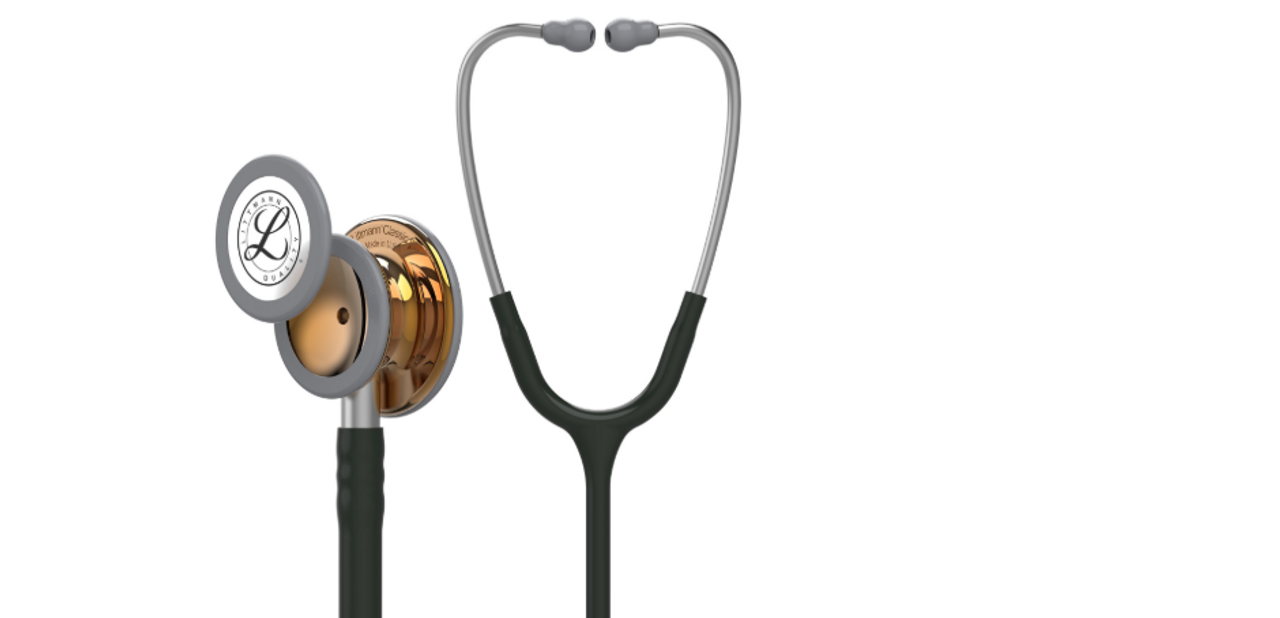A tunable-diaphragm stethoscope lets you capture both low- and high-frequency body sounds without ever flipping your chestpiece. Simply vary your touch to switch between “bell” and “diaphragm” modes.
Here’s a concise, step-by-step guide to getting the most out of your tunable-diaphragm stethoscope today.
Why “Tunable” Matters
Tunable-diaphragm stethoscopes let you hear both low- and high-frequency sounds by simply adjusting the pressure you apply:
- Light pressure → Diaphragm vibrates freely, picking up low-frequency sounds (murmurs, bowel sounds).
- Firm pressure → Stiffer diaphragm, accentuating high-frequency sounds (crackles, normal heart tones).
This versatility means you don’t have to flip between bell and diaphragm—just adjust your touch.
How to Use Your Tunable Diaphragm
- Check the Fit
-
- Ensure the headset is at a slight forward angle to match your ear canals.
- Soft-sealing ear tips should form a snug seal; no outside noise should leak in.
2. Position the Chestpiece
-
- Place the diaphragm flat against the skin.
- Start on bare skin (clothing dampens sound).
3. Listen for Low Frequencies (Belly of the Sound)
-
- Lightly press the chestpiece.
- You’ll hear deeper sounds, S3/S4 gallops, and bowel motility.
4. Listen for High Frequencies (Edge of the Sound)
-
- Firmly press the chestpiece until you feel resistance.
- You’ll hear sharper sounds, crackles, and normal heart valves.
5. Move Slowly and Methodically
-
- Slide around the thorax or abdomen to compare left/right and identify focal findings.
- Pause in each spot for a few seconds; sometimes the subtle sounds take a moment to emerge.
6. Keep It Clean
-
- Wipe the diaphragm and tubing with 70% isopropyl alcohol between each patient to maintain acoustic clarity and hygiene.
- Inspect tubing for cracks and ear-tips for wear during regular checks; replace as needed to maintain seal integrity.
Systematic Auscultation
- Start at the Apex (5th intercostal space, midclavicular line) for heart sounds.
- Move Methodically: Slide to the aortic, pulmonic, tricuspid, and mitral areas, pausing at each for several seconds.
- Assess Lungs: Place the diaphragm at multiple posterior and anterior chest sites, listening both lightly and firmly in each spot to compare low and high sounds.
- Abdomen & Vessels: Don’t forget bowel sounds and bruits, tune accordingly.
Popular Littmann Tunable-Diaphragm Models
- 3M Littmann Classic III: High acoustic sensitivity with dual-sided chestpiece; the Littmann Classic III (light pressure for low-frequency sounds, firm pressure for high) pediatric side converts to open bell.
- Cardiology IV: All-in-one adult/pediatric chestpiece, the Cardiology IV features a single-piece tunable diaphragm on both sides plus dual-lumen tubing for exceptional sound clarity.
- Master Cardiology: Premium single-sided chestpiece with advanced tunable-diaphragm technology, with the Master Cardiology switch from low to high frequencies with a simple change in pressure. Seven-year warranty and customizable engraving available.
Pro Tip: Practice on a healthy volunteer first, listen for their normal breath and heart sounds so you’ll more easily spot abnormalities when you need to.
Mastering the tunable diaphragm takes a bit of feel, but once you’ve got it down, you’ll glide effortlessly between subtle S3/S4 murmurs and crisp lung sounds, no chestpiece juggling required. Happy auscultating!

